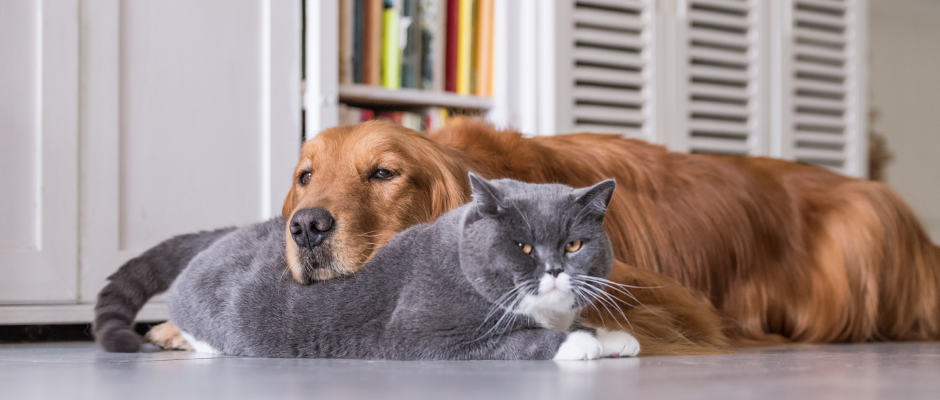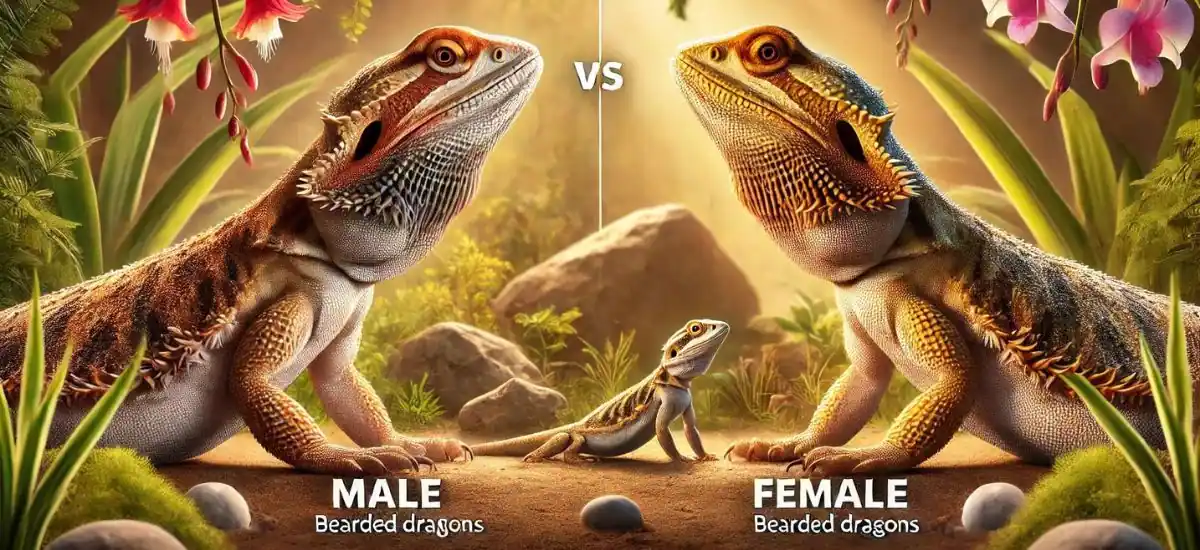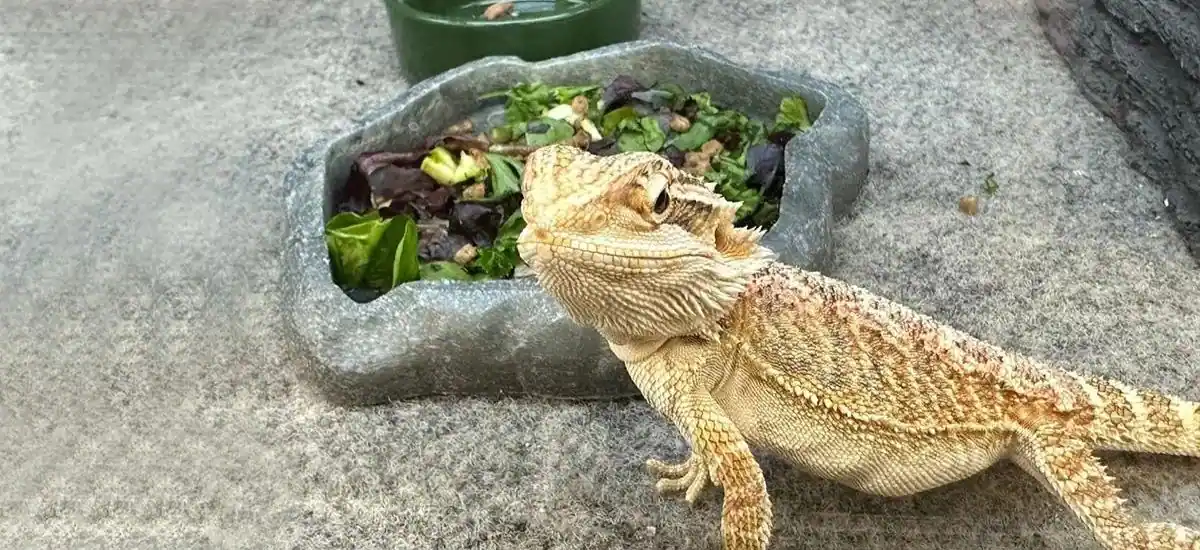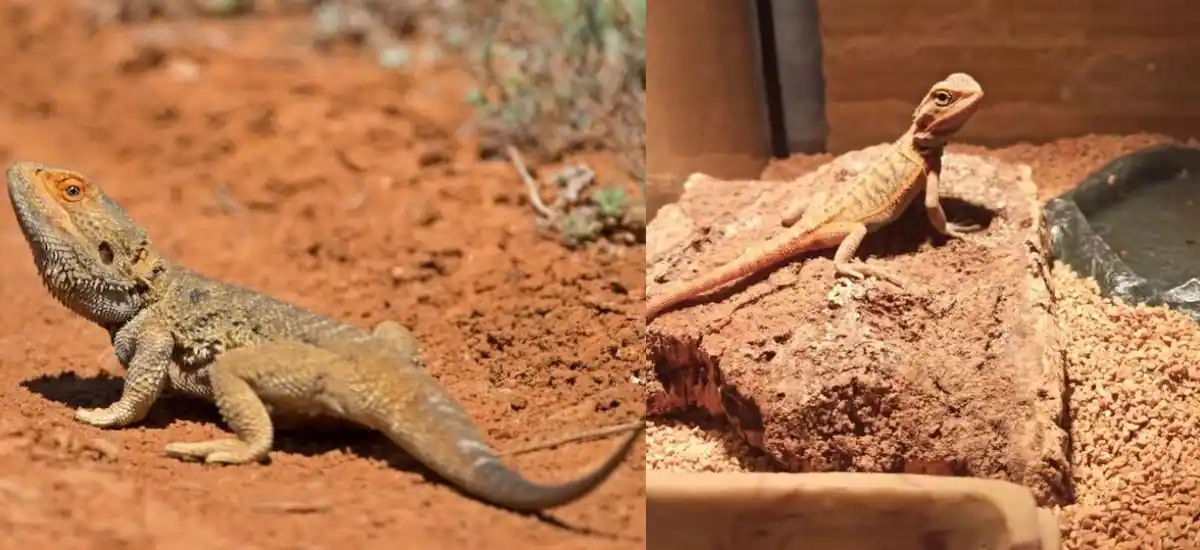Bearded dragons have climbed the ranks to become one of the most popular pets among reptile enthusiasts. Known for their docile temperament and manageable care requirements, these creatures make fantastic companions. However, potential owners often wonder about the differences between male and female bearded dragons. This curiosity is not just about which might be cuddlier, but extends to their physical characteristics, behaviors, and care needs.
Physical Differences
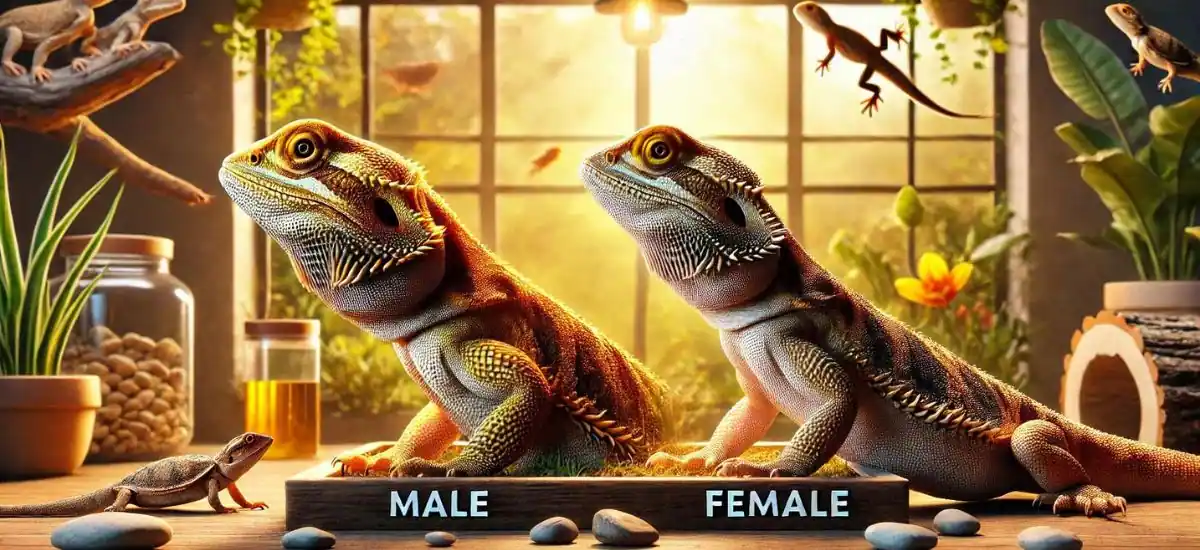
Size and Stature
When it comes to physical stature, male bearded dragons typically take the lead in size. Males can grow to be larger and more robust than their female counterparts, which is a significant factor to consider if space or handling ability are concerns. Understanding these size differences is crucial for anyone looking to adopt these reptiles, as it influences enclosure size and the overall care regimen.
Coloration and Markings
The palette of colors and patterns on a bearded dragon can vary dramatically from one individual to another, influenced heavily by genetics. However, there are subtle yet distinct differences in coloration and markings between the genders. Males often display more vivid and contrasting color patterns, which are believed to play a role in their mating rituals. Recognizing these differences can be a delightful challenge for hobbyists and breeders alike.
Behavioral Traits
Territorial Behavior
Male bearded dragons are generally more territorial than females, especially during the breeding season. They may show this by puffing up their beards, displaying their throats, and even engaging in physical displays when they feel their territory is being threatened. This behavior is essential to understand for anyone considering keeping multiple dragons, as it impacts how they should be housed and managed to avoid conflicts.
Social Interaction
The social dynamics between male and female bearded dragons can also differ significantly. Males might be more assertive or aggressive, particularly towards other males, while females tend to be more tolerant of companionship. This temperament plays a critical role in determining whether to house them singly or in groups and how to manage their interactions with humans and other pets.
Breeding and Reproduction
Mating Rituals
The mating behaviors of bearded dragons are fascinating and markedly distinct between the sexes. Males typically initiate mating through a series of head bobs and limb movements to attract and communicate readiness to the female. They may also become more brightly colored during this time to catch the eye of potential mates. Females respond with their body language, either accepting the male by submitting and allowing him to mount or rejecting him with aggressive postures.
Egg-Laying and Care
Female bearded dragons are solely responsible for egg-laying and the initial care of their offspring. After mating, a female will lay a clutch of eggs, which she buries in sand or soft soil. While bearded dragons do not exhibit extensive maternal care post-laying, the conditions of the nest, such as temperature and humidity, are crucial for the successful incubation of the eggs. Understanding these requirements is vital for breeders and hobbyists aiming to successfully breed their dragons.
Health and Lifespan

Common Health Issues
Health concerns can vary significantly between male and female bearded dragons. Males may be more prone to stress-related conditions due to their territorial nature, which can lead to a suppressed immune system and greater susceptibility to infections. Females, on the other hand, face health risks related to reproduction, such as egg-binding, a condition that can be life-threatening if not promptly treated.
Lifespan Expectancy
Overall, the lifespan of bearded dragons can range from 10 to 15 years, with proper care. However, there are subtle differences in longevity between the genders. Females may have a slightly shorter lifespan, often due to the physical demands of repeated breeding and egg-laying, while males, if kept stress-free and in optimal conditions, may live longer. Prospective owners should consider these aspects when planning for the long-term commitment of caring for these pets.
Care Requirements
Diet and Nutrition
While the basic dietary needs of male and female bearded dragons are similar, consisting of a balanced mix of insects, greens, and occasional fruits, there are subtle differences to consider. Males, generally being larger, may require more calories, especially during their growth phase and breeding season. Females, particularly when gravid (pregnant), need additional calcium to support egg development. Adjusting their diet to meet these specific needs ensures their health and longevity.
Habitat Setup
The setup of a bearded dragon’s habitat must also take gender into consideration. Males might need more space to manage their territorial behavior, potentially requiring larger enclosures or specific setups to mitigate stress. For females, especially those that are breeding, providing an appropriate area for laying eggs, such as a nesting box with the right substrate, is crucial. Temperature gradients, UVB lighting, and hiding spots are essential for both but may be arranged differently based on the dragon’s behavior and health needs.
Choosing Between Male and Female
Choosing whether a male or female bearded dragon is right for you involves several considerations:
- Temperament and Handling: Males can be more aggressive and territorial, which might be challenging for first-time owners or those with children. Females generally have a calmer demeanor.
- Space Requirements: Males require more space due to their size and behavior. Ensure you have adequate room for a larger habitat if you opt for a male.
- Breeding Intentions: If you plan to breed bearded dragons, owning females involves more intensive care during the breeding cycle, including handling egg-laying and potential health issues like egg-binding.
Understanding these factors will help in making an informed decision that aligns with your lifestyle, experience level, and the amount of time and resources you can dedicate to your pet.
Conclusion
Male and female bearded dragons offer distinct experiences due to their differences in size, behavior, and care needs. By understanding these differences, prospective owners can better prepare for the rewarding journey of caring for these fascinating reptiles. Whether you choose a male or female, the key to a healthy and happy bearded dragon lies in providing a suitable environment, proper nutrition, and regular veterinary care, fostering a deeper appreciation and connection with your scaly companion.
Read More:
- Yellow Fungus In Bearded Dragons
- How Long Can Bearded Dragons Go Without Food
- DIY Homemade Bearded Dragon Cage

